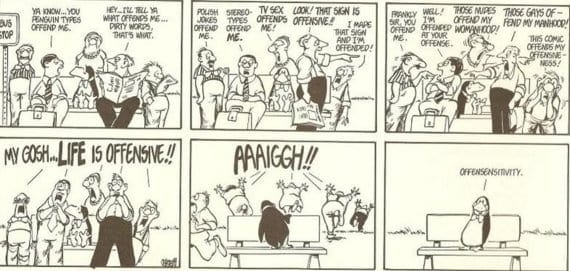
All About Art, Comics and Cartoons
Comic Feature – Dr. Theodore Seuss
Theodor Seuss Geisel was an American children’s author, political cartoonist, poet, animator, screenwriter, filmmaker, and artist, best known for his work writing and illustrating more than 60 books under the pen name Doctor Seuss.
His work includes many of the most popular children’s books of all time, selling over 600 million copies and being translated into more than 20 languages by the time of his death.
Geisel adopted the name “Dr. Seuss” as an undergraduate at Dartmouth College and as a graduate student at the University of Oxford. He left Oxford in 1927 to begin his career as an illustrator and cartoonist for Vanity Fair, Life, and various other publications.

He published his first children’s book And to Think That I Saw It on Mulberry Street in 1937. The book was reportedly rejected by nearly 30 publishers but after his chance meeting with a friend who was an editor at Vanguard Press, And to Think That I Saw It on Mulberry Street was finally released to rave reviews and pathing his path as a timeless children’s author.
He also worked as an illustrator for advertising campaigns, most notably for FLIT and Standard Oil. During World War II, he took a brief hiatus from children’s literature to illustrate political for the New York newspaper PM. from 1941-1943, Geisel, also known as Dr. Seuss, worked as the chief editorial cartoonist for the New York magazine PM, creating over 400 editorial cartoons.

As well worked in the animation and film department of the United States Army where he wrote, produced or animated many productions – both live-action and animated – including Design for Death, which later won the 1947 Academy Award for Best Documentary Feature.
After the war, Geisel returned to writing children’s books, writing classics like If I Ran the Zoo (1950), Horton Hears a Who! (1955), If I Ran the Circus (1956), The Cat in the Hat (1957), How the Grinch Stole Christmas! (1957), and Green Eggs and Ham (1960). He published over 60 books during his career, which have spawned numerous adaptations, including 11 television specials, four feature films, a Broadway musical, and four television series.
Geisel won the Lewis Carroll Shelf Award in 1958 for Horton Hatches the Egg and again in 1961 for And to Think That I Saw It on Mulberry Street. According to various reports, by the early 21st century more than 600 million copies of Dr. Seuss books had been sold worldwide. Geisel’s birthday, March 2, has been adopted as the annual date for National Read Across America Day, an initiative on reading created by the National Education Association.

Looking for more wacky Seuss fun?
Check out our Special Comic Feauture On Dr.Suess or 30 Inspiring Suess Quotes Kids Will Love.
SOURCES: WIKIPEDIA, BIOGRAPHY, LIBRARY DIGITAL COLLECTIONS, BRITTANICA
Enchanted Little World is a daily blog highlighting good news, funny videos, happy people and inspiring stories from around the world. Give each day a “high-five of happiness” with Enchanted Little World.

All About Art, Comics and Cartoons
Comic Feature – Richard Thompson
Richard Church Thompson (October 8, 1957 – July 27, 2016) was an American illustrator and cartoonist best known for his syndicated comic strip Cul de Sac distributed by Universal Press Syndicate to 150 worldwide and the illustrated poem “Make the Pie Higher”. He was given the Reuben Award for Outstanding Cartoonist of the Year for 2010.
Born in Baltimore on October 8, 1957. He was an avid reader from a young age and was particularly drawn to Winnie the Pooh and Dr. Seuss. Thompson continued his formal art education at Montgomery County Community College, although he dropped out prior to graduation, in 2004 the college would give him the Milton F. “Sonny” Clogg Alumni of the Year award.
In 1982, Thompson applied for a position at The Washington Post, which brought him to the attention of art director Francis Tanabe. Tanabe immediately hired him as a freelance artist, and the association would continue for nearly three decades. Thompson contributed regularly to both The Washington Post and The Washington Post Magazine and was the newspaper’s unofficial staff artist by 1985.
The weekly, watercolored incarnation of his comic Cul de Sac launched in The Washington Post Magazine on February 14, 2004. The strip focuses on a four-year-old girl, Alice Otterloop, and her daily life at preschool and at home. He also created the series Richard’s Poor Almanac is a cartoon series by Richard Thompson which ran in the Washington Post Style section from 1997 until his passing in 2016.
Upon learning that George W. Bush had opted not to invite an official poet to his inauguration ceremony in January 2001, Thompson composed his own poem from Bush malapropisms, and assembled them into a free-form verse entitled “Make the Pie Higher” The cartoon was widely circulated online over the next year, was set to music by multiple composers. SOURCES: WIKIPEDIA, COMPLEX, WASHINGTON POST

PHOTO CREDIT: DUSTIN FENSTERMACHER FOR THE WASHINGTON POST





Enchanted Little World is a daily blog highlighting good news, funny videos, happy people and inspiring stories from around the world. Give each day a “high-five of happiness” with Enchanted Little World

All About Art, Comics and Cartoons
Comic Feature – Mark Parisi
Off The Mark is a comic panel created by Mark Parisi which began in 1987 and now appears in 100 newspapers. It also appears on greeting cards, in magazines, on T-shirts and more. Off The Mark is distributed daily by Andrews McMeel Universal.
Parisi began drawing when he was very young, and frequently copied comic strips out of newspapers. Parisi said that after reading Charles Schulz’ comic strip Peanuts, he “immediately wanted to draw it.”
After many odd jobs and a graphic design degree from Salem State College, Mark felt he had two marketable skills: cartooning and grocery bagging. He decided to choose cartooning, even though it didn’t pay as well. With influences ranging from Charles Schulz, MAD Magazine and, more obviously, Gary Larson, he started self-syndicating his off the mark comic panel in 1987.
The humour of this comic panel focuses on off-beat, slice-of-life situations. Andrews McMeel Universal describes it as: “A world of scheming pets, evil computers, and talking plants that puts an ironic, absurd or just plain silly spin on everyday life.”
Off The Mark was named “Best Newspaper Panel” by the National Cartoonists Society in 2008, and again in 2011. It was also nominated in 2004, 2006, 2013, and 2016. Off The Mark greeting cards were named “Best Greeting Cards” by the National Cartoonists Society in 2013. Mark is still drawing hilarious comics as well as put out a book series for kids called Marty Pants. SOURCE WIKIPEDIA, OFF THE MARK,








Enchanted Little World is a daily blog highlighting good news, funny videos, happy people and inspiring stories from around the world. Give each day a “high-five of happiness” with Enchanted Little World.

All About Art, Comics and Cartoons
Comic Feature – Berkeley Breathed ( Opus )
Guy Berkeley “Berke” Breathed is an American cartoonist, children’s book creator, director and screenwriter, best known for comic strips Bloom County, Outland, and Opus. Bloom County earned Breathed the Pulitzer Prize for Editorial Cartooning in 1987. He is only one of two cartoonists to have one a Pulitzer Prize for Bloom County, which dealt with socio-political issues as seen through the eyes of highly exaggerated characters and humorous analogies.
Breathed was first published when he was hired part-time by the Austin American-Statesman to draw editorial cartoons for the newspaper. This job was short-lived; he was dismissed shortly after one of his cartoons caused outrage. His first regularly published strip, Academia Waltz, appeared in the Daily Texan in 1978. The strip attracted notice from the editors of the Washington Post who recruited him to do a nationally syndicated strip.
On December 8, 1980, Bloom County made its debut and featured some of the characters from Academia Waltz, including former frat-boy Steve Dallas and the paraplegic Vietnam war veteran Cutter John. Bloom County earned Berkeley the Pulitzer Prize for editorial cartooning in 1987. The strip eventually appeared in over 1,200 newspapers around the world until he retired the daily strip in 1989, stating, “A good comic strip is no more eternal than a ripe melon. The ugly truth is that in most cases, comics age less gracefully than their creators”.
He replaced this strip with the surreal Sunday-only cartoon, Outland in 1989, which featured some of the Bloom County characters, including Opus the Penguin and Bill the Cat. He ended Outland in 1995. Eight years later, Berkeley began producing the comic strip, Opus, a Sunday-only strip featuring Opus the Penguin, who was one of the iconic characters from Bloom County. He colors the cartoon himself with Adobe Photoshop.
In addition to his syndicated cartoon work, which has produced eleven best-selling cartoon collections, he has also produced seven children’s books, two of which, , were made into animated films. Berkeley’s writing has also been featured in numerous publications. In 2015 he began posting starting a cartoon entitled “Bloom County 2015” and he now posts a new comic almost daily. SOURCES: WIKIPEDIA, GRAPHIC NOVELS, FAMOUS BIRTHDAYS






Enchanted Little World is a daily blog highlighting good news, funny videos, happy people and inspiring stories from around the world. Give each day a “high-five of happiness” with Enchanted Little World.



























